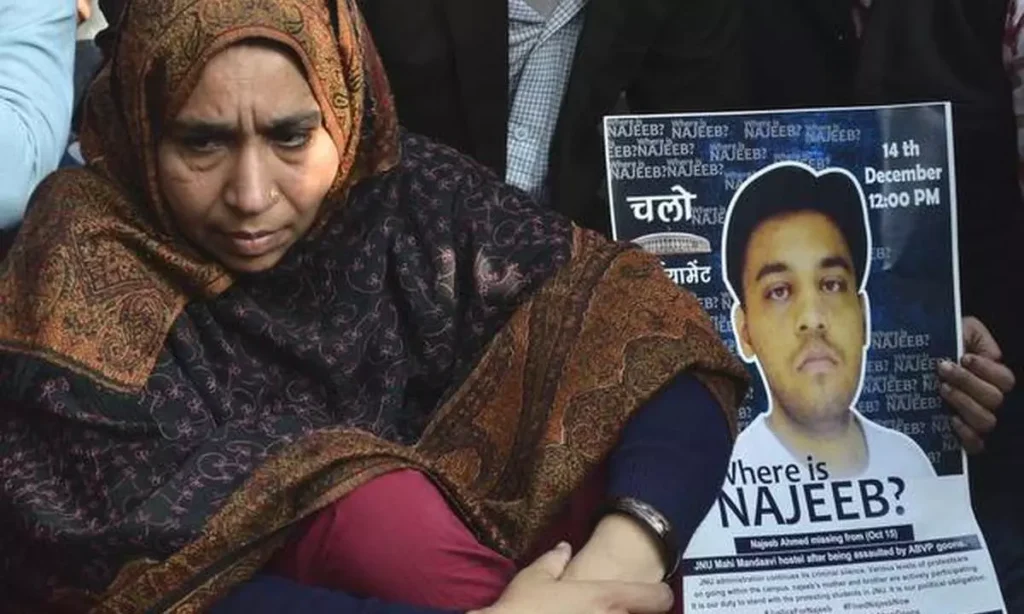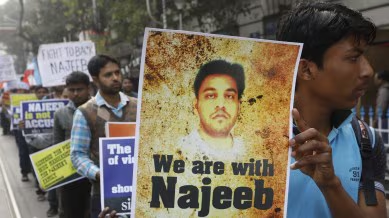
In a significant ruling, a Delhi court on Monday, June 30, 2025, permitted the Central Bureau of Investigation (CBI) to close the case related to the disappearance of JNU student Najeeb Ahmed. This case has remained one of the most mysterious and politically sensitive student cases in India since it first came to light in October 2016. While the court accepted the closure report submitted by the central agency, it also stated that the case could be reopened if any new evidence is discovered in the future. This verdict has brought temporary legal closure to a case that has haunted a family, sparked nationwide protests, and raised deep questions about student safety, law enforcement, and institutional responsibility.
Who Was Najeeb Ahmed?
Najeeb Ahmed, a native of Badaun in Uttar Pradesh, was a promising young student pursuing his M.Sc in Biotechnology from Jawaharlal Nehru University (JNU) in Delhi. He resided in Room 106 of the Mahi-Mandvi hostel on the JNU campus. Known for his quiet and academic personality, Najeeb returned to the university on October 13, 2016, after spending a few days at home. Just two days later, on the night of October 15, he made a distressing phone call to his mother, Fatima Nafees, telling her that something bad had happened to him. That phone call would be the last time anyone heard from him.
What Happened on the Night Before His Disappearance?
According to Fatima Nafees and several accounts from the campus, Najeeb was allegedly assaulted during the night of October 14, 2016, following a scuffle with members of the Akhil Bharatiya Vidyarthi Parishad (ABVP), the student wing of the Rashtriya Swayamsevak Sangh (RSS). His roommate, Mohammad Kasim, confirmed to Najeeb’s mother that there had been a fight and that Najeeb was injured.
Reportedly, Najeeb visited Safdarjung Hospital later that night, accompanied by his friend Md Qasim, for medical assistance. However, the CBI stated in its report that Najeeb refused to get a Medico-Legal Certificate (MLC) made, which would have been an official record of the injuries. The absence of this document became a critical gap in the investigation, as the hospital authorities later claimed that no formal statement could be recorded without the MLC.
This missing step became an unexplained turning point in the series of events that led to Najeeb’s disappearance. The next morning, Najeeb was gone, and his whereabouts have remained unknown since.
The Day Najeeb Disappeared
On October 15, 2016, Fatima Nafees traveled from Bulandshahr, Uttar Pradesh, to Delhi to visit her son after the worrying phone call. She arrived at the Mahi-Mandvi hostel only to find his room empty. Hostel authorities claimed that Najeeb was seen leaving the campus in an auto-rickshaw, but there was no CCTV footage, no eyewitnesses, and no trail of where he went after that. His mobile phone was switched off, and there were no transactions or activity on his bank accounts following the disappearance.
This total absence of traceable leads turned the case into a national mystery and sparked outrage across student communities and human rights groups throughout the country.
Delhi Police Investigation and Transfer to CBI
Initially, the case was handled by the Delhi Police, but their investigation made little progress. Despite widespread protests and appeals by the family, the police were unable to produce concrete leads or suspects. Growing pressure from the public and media led the Delhi High Court to transfer the case to the Central Bureau of Investigation (CBI) in 2017, giving hope to the family and activists that a central agency might bring better results.
CBI’s Inconclusive Probe and Closure Report
The CBI’s investigation was extensive but, as they later admitted, ultimately inconclusive. The agency explored multiple theories, including voluntary disappearance, mental health distress, and abduction, but none were backed by definitive evidence. In 2018, the CBI submitted a closure report, stating that despite examining phone records, hostel registers, conducting forensic checks, and interrogating numerous suspects, no trace of Najeeb could be found.
According to the report, no foul play could be established. The CBI told the court that all avenues had been exhausted, and no useful outcome had emerged from the investigation.
A Mother’s Relentless Fight for Justice
Fatima Nafees, Najeeb’s mother, has been the face of the long and painful fight for justice. Refusing to accept the CBI’s closure report, she challenged it in court, accusing the central agency of acting under political pressure and not investigating the case thoroughly. Her counsel argued that the case was “politically motivated” and claimed the CBI had “succumbed to the pressure of its masters.”
For nearly nine years, Fatima has knocked on every legal and institutional door. She has led protests, spoken at press conferences, and filed multiple appeals—all in the hope of discovering what happened to her son. She has become a symbol of resilience, courage, and a mother’s unshakable will in the face of institutional apathy.
The Final Court Verdict: Case Closed, With Conditions
After years of litigation and arguments, Additional Chief Judicial Magistrate (ACJM) Jyoti Maheshwari on June 30, 2025, accepted the CBI’s request to close the case. While agreeing that the agency had found no actionable evidence, the court made it clear that if any new evidence comes to light, the case can be reopened.
This legal closure does not provide emotional closure for the Ahmed family. Instead, it highlights the limitations of India’s investigative system when it comes to politically charged cases, particularly those involving vulnerable individuals.
Public Outcry and Continued Support
The Najeeb Ahmed case had a profound impact on the country’s youth and student movements. JNU students, as well as those from other institutions across India, held numerous candlelight marches, sit-ins, and protests demanding accountability and justice. The hashtags #WhereIsNajeeb and #JusticeForNajeeb continue to trend on social media, with activists and students regularly invoking his name during protests against police inaction or political suppression.
The case also led to widespread criticism of law enforcement, with many claiming that the investigation was botched, influenced, or intentionally derailed to protect powerful interests.
Unanswered Questions and Lingering Doubts
Even as the court has allowed the case to close, several critical questions remain unanswered. What exactly happened during the scuffle on October 14? Why did Najeeb choose not to get a medico-legal certificate despite reportedly being assaulted? What led him to leave the campus suddenly? And why were there no solid leads despite the involvement of top investigating agencies?
The lack of transparency and accountability in the process has led many to believe that the truth has been deliberately buried. The absence of CCTV footage, the incomplete hospital records, and the shifting narratives have created an atmosphere of mistrust and frustration.
A Case That Changed Student Politics and Awareness
The Najeeb Ahmed missing case is not just about one student’s disappearance. It became a landmark case highlighting the dangers students face, the politicization of campuses, and the failure of institutions to protect their most vulnerable members. It served as a wake-up call for universities, prompting discussions around student safety, campus surveillance, and psychological support systems.
It also changed the national conversation on student rights, reminding the public of the power imbalance between state-backed organizations and independent voices within universities.
With the case now officially closed by the Delhi court, it marks the end of a legal journey that spanned nine long years. But for Fatima Nafees, and thousands who stood in solidarity, it was not the end. The disappearance of Najeeb Ahmed remains a deep scar on the conscience of the nation—a reminder that even in democratic societies, truth can be elusive, and justice can be denied.The verdict may have brought legal closure, but until the truth about what happened to Najeeb Ahmed is known, the case will continue to live on in the public’s memory—as a symbol of injustice, struggle, and unanswered pain.































